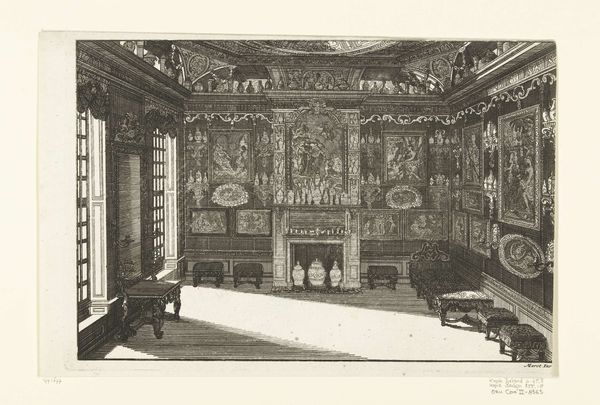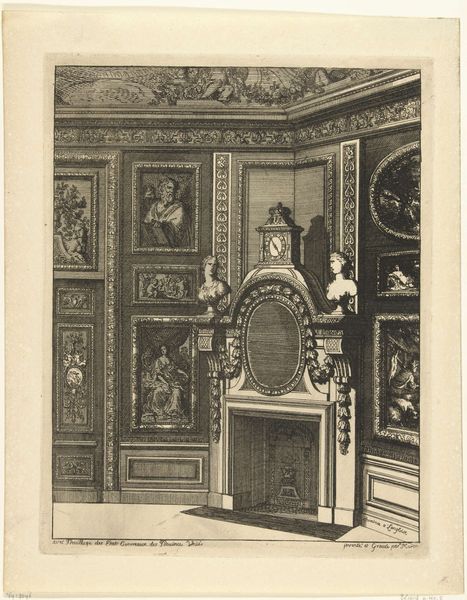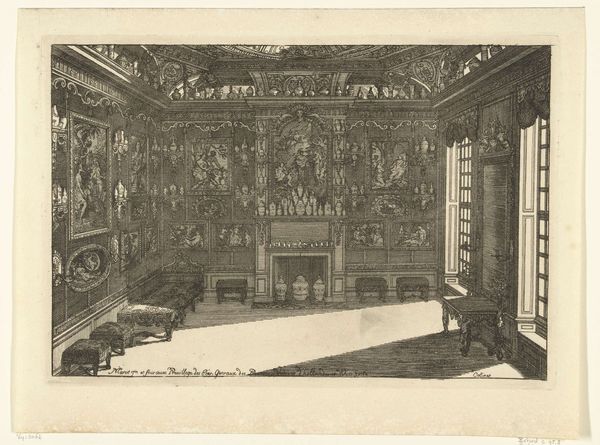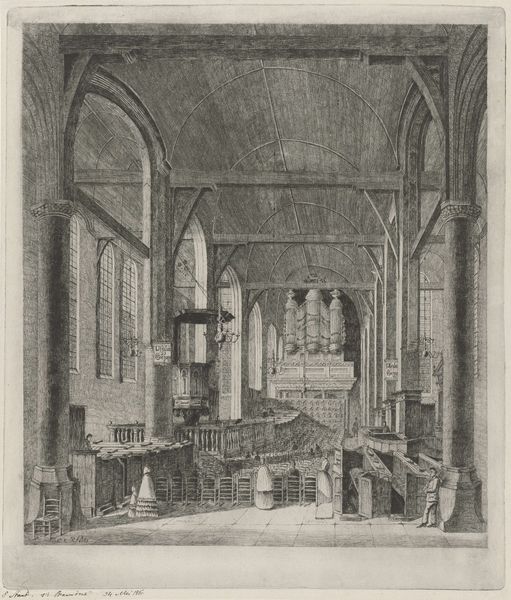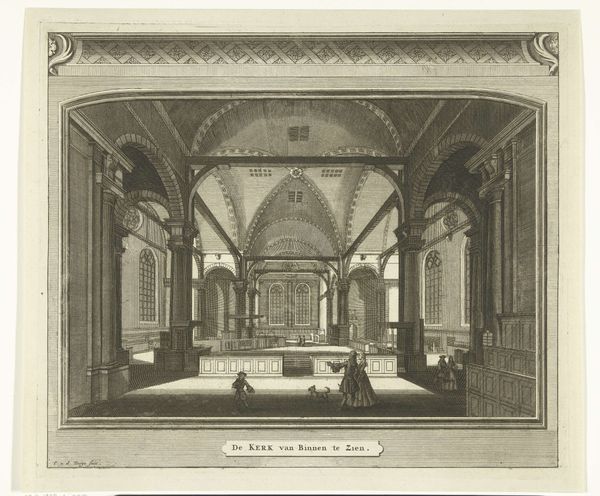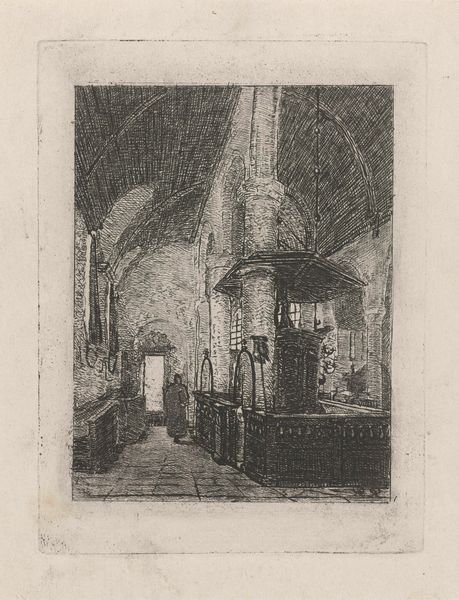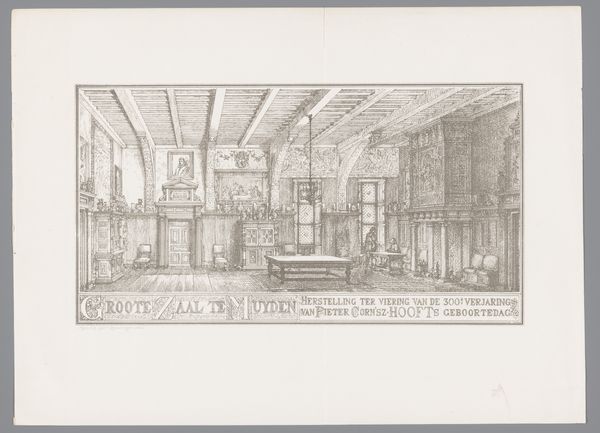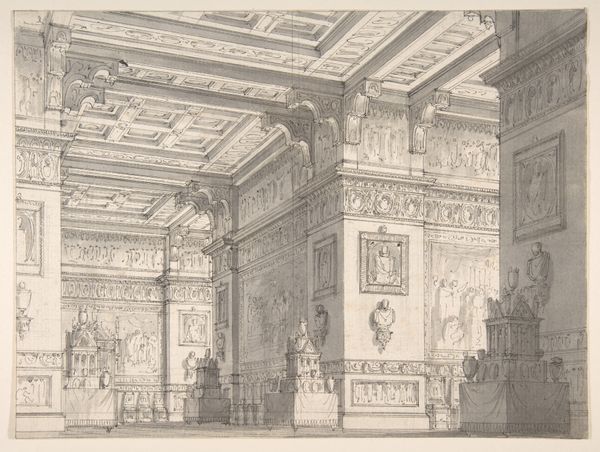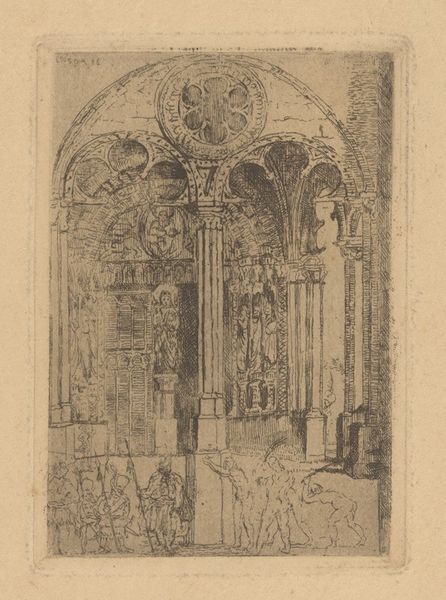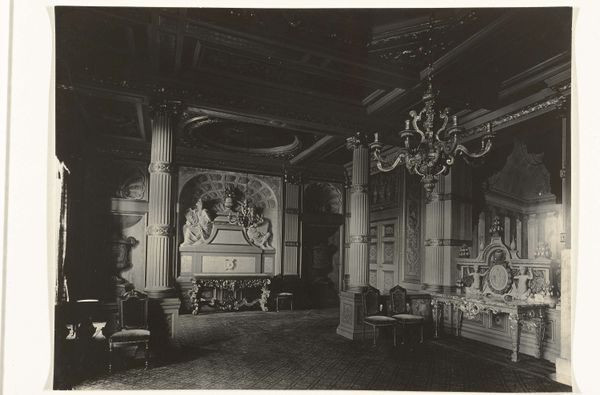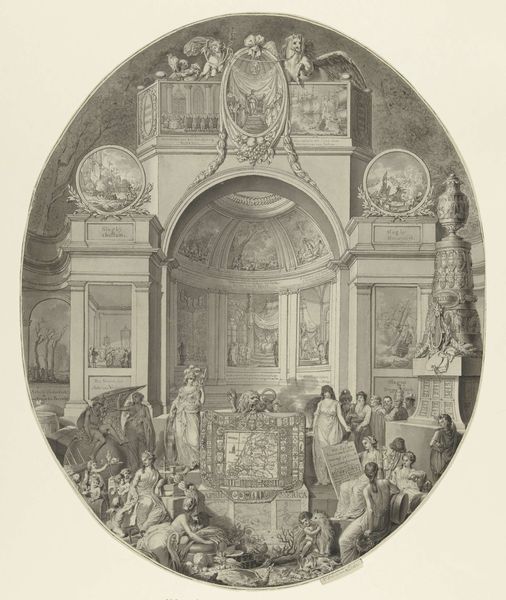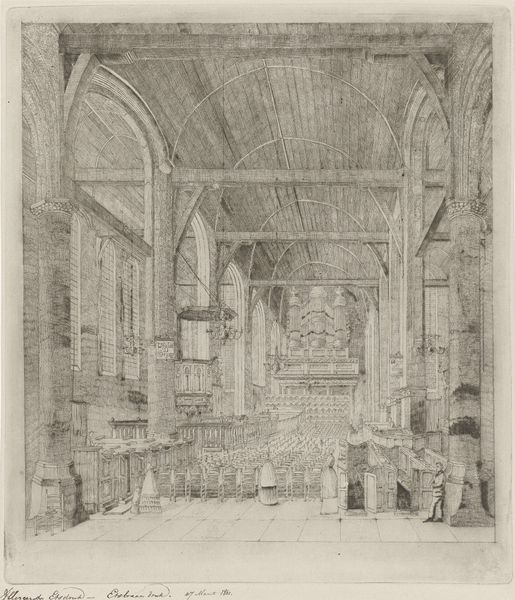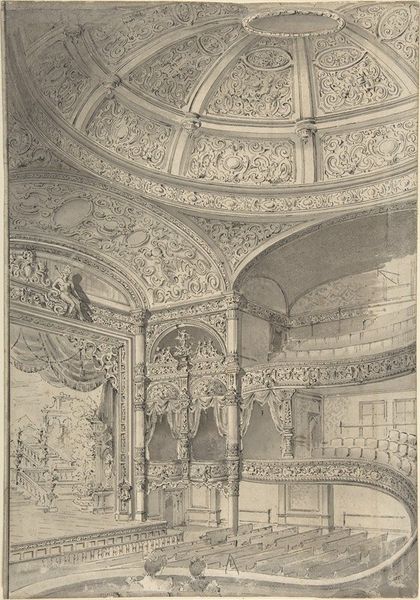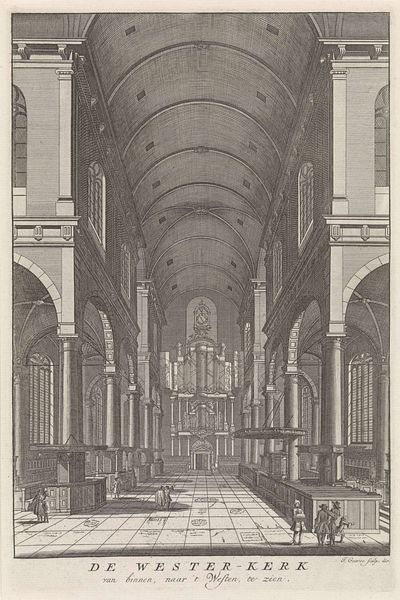
print, engraving, architecture
#
historical design
# print
#
landscape
#
historical photography
#
19th century
#
genre-painting
#
engraving
#
architecture
Dimensions: height 545 mm, width 380 mm
Copyright: Rijks Museum: Open Domain
Curator: Wow, it's intensely graphic, almost a stage set. The theatrical lighting throws the altar into stark relief while the foreground is muted, creating this very intimate viewing space. Editor: Indeed. Let’s orient our listeners: this is an engraving titled "Augustijnenkerk 'de Ster' te Amsterdam," dating between 1815 and 1866, attributed to Petrus Augustus Beretta. The interior of the church is meticulously rendered, a real treat for the eye. Curator: Meticulous, yes, but also...constructed, perhaps? Look at the figures kneeling. They feel placed, like props, leading the eye upwards to that dramatic, almost operatic, high altar with the crucifix. The very embodiment of a space intended to instill awe, it lacks spontaneity. Editor: Churches as stages for spiritual drama...I love that framing! This work really plays on contrasts. The earthly plane—represented by those somewhat stiff figures in the foreground—versus the heavenly, illuminated zone of the altar. And don't overlook the use of vertical lines, guiding our vision upward toward a sense of the divine. The columns, the arches... they all speak to aspiration. Curator: Though it may feel constructed, and overly organized to our contemporary eye, perhaps there's a strange comfort in that structure. Everything in its place, offering a tangible vision of heaven's own organization and permanence, within the context of Amsterdam as an industrial and economic powerhouse, perhaps that need for permanence was quite grounding. Editor: I like how you link this to a historical yearning for stability! Now consider that crucifix; it’s presented less as a symbol of suffering, more as a triumphant centerpiece. An assertion of faith at the heart of urban life. Beretta captured not just a place of worship, but a complex dialogue between devotion and environment. Curator: So, beyond the surface accuracy and the technical skill displayed, we see also this interesting question: Is the image truly illustrating spirituality, or just demonstrating a place where faith is processed and distributed? It feels strangely, and I would even say, ironically, commercial. Editor: A haunting paradox. Looking at this image is almost an act of contemplating those same conflicts embedded into our contemporary idea of faith as a consumer product. Curator: It's like peering into a snow globe of the past, isn’t it? So beautifully crafted, so perfectly contained, yet somehow…frozen. Editor: Leaving us, ironically, feeling both a sense of profound reverence, but a sense of detached and melancholic nostalgia for that era.
Comments
No comments
Be the first to comment and join the conversation on the ultimate creative platform.
